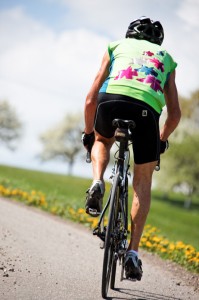
Talk to enough Burlington-area drivers about their pet peeves, and a common complaint emerges: Many Vermonters — whether out of politeness or ignorance of the rules — areterrible at negotiating four-way-stop intersections.
So first, let’s clear up the rules.
In general, it’s first come, first served: Drivers should proceed through the intersection in the order in which they arrived. When two vehiclesapproach a four-way stop at the same time, the driver on the left should yield the right-of-way to the driver on the right. Bicyclists and skateboarders, take note: The rules apply to you, too.
“Remembering all those little rules can be challenging,” concedes Andi Higbee, deputy chief of the Burlington Police Department. “Certain people do not wait as they should, and that’s where the aggravation occurs.”
For whatever reason, these rules seem difficult for the average driver to follow. WTF? Perhaps it’s because many Vermonters are accustomed to dirt roads and uncongested rural highways where urban traffic patterns may not apply. Or maybe the problem is that, for many of us, driver’s ed is a distant memory. Richard Ritter, owner of Burlington-based Vermont Green Driving School, says his students know the rules; other drivers are the problem. (Still, one of my coworkers, a recent transplant to Vermont from the Midwest and a passionate advocate of four-way-stop etiquette, asks bluntly, “Do Vermonters even take driver’s ed?”)
Or maybe the problem is just good ol’ Yankee manners. In an August blog post titled “Why I Love Vermont,” writer and healer Raven Mardirosian proclaims, “At a 4-way stop, be prepared to wait even longer, simply because everyone waves at other drivers to go first.”
In a phone interview, Rutland-area resident Mardirosian elaborates that, after living in many other places — including New York City, Cape Cod and Portland, Ore. — she feels qualified to pronounce Vermonters “the most polite drivers that I’ve known,” a trait she feels is positive — “except when you’re in a rush.”
In fact, this excessive courtesy is widespread enough to warrant mention in comedian Jason Lorber’s repertoire of wisecracks about Vermont. “Vermont drivers are very polite — like, at four-way stops. Have you noticed?” he riffs in one clip from his standup routine. He adds that it’s more of a “passive-aggressive polite” — a driver might wave another ahead, only to flip off Lorber after a confusing “No, you go ahead” standoff at the intersection.
Furthermore, what may seem like good manners to one person is heel-dragging inefficiency to another. When I put the question to my coworkers, I discover that four-way stops engender heated passion in drivers. Their reactions may have something to do with the location of the Seven Days office on South Champlain Street, just around the corner from one of the most notoriously congested intersections in Burlington: that of Maple and Pine streets.
Complains one interviewee, “If you are that person [with the right-of-way], well, get your ass in gear! … I have more problems with people being too polite, rather than selfish. That’s what really holds up the works.” Another describes four-way stops more simply: “They’re a clusterfuck.”
The consensus is that traffic is at its safest and most efficient when drivers “go with the flow.”
But at least one traffic analyst thinks the four-way-stop problem is bigger than just drivers’ behavior. Tony Redington is a former policy analyst for Vermont’s public service and transportation departments. He’s a passionate advocate of roundabouts — and, he’s quick to add, “passionately against four-way stops.” In a letter dated August 22 to the Burlington Department of Public Works, Redington advocates for roundabouts as a replacement for the “four-way-stop intersections which infect Burlington.” Roundabouts, he says, reduce congestion, enable denser land use, and cut down on serious and fatal injuries.
But Bruce Nyquist, manager of the traffic, safety and pavement section of the Vermont Agency of Transportation, points out that roundabouts have their downsides: They’re more expensive to install than traffic signals or stop signs, and they require more space. VTrans considered replacing a congested four-way stop in Williston with a roundabout, but the community didn’t like the idea. All-way stops may be inefficient in congested areas, Nyquist concedes, but they have their merits: They can improve safety at dangerous intersections.
Meanwhile, the abundance of four-way stops in Burlington isn’t going anywhere any time soon. That leaves Higbee to remind drivers that the rules of the road were adopted for a reason. Disregarding them at four-way stops is technically a traffic violation, and police could ticket violators. If it’s an egregious violation, they will. Luckily, Higbee says, most of the accidents that the police department sees at these intersections occur at low speeds, so they’re rarely serious.
More dangerous are the collisions that happen when bicyclists or skateboarders “plow right through intersections,” Higbee says. “I don’t know what people are thinking … As you know, a human being versus a 2000-pound piece of metal — you know who wins that race.”
Outraged, or merely curious, about something? Send your burning question towtf@sevendaysvt.com.



















